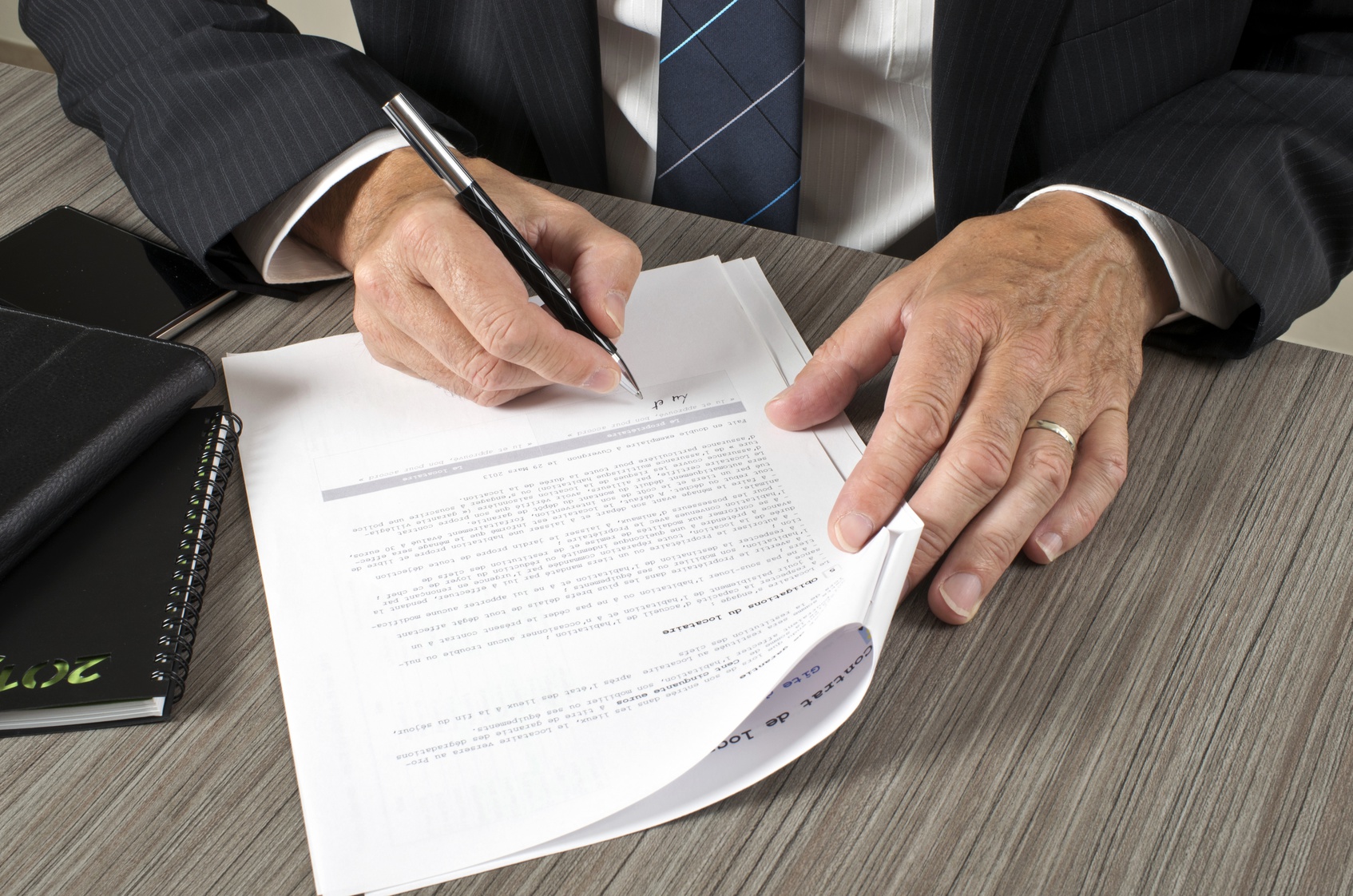Purchasing a home is often one of the most significant decisions in our lives. Once we’ve found our dream home and submitted a purchase offer, it’s essential to know the steps to take to finalize the transaction. Here the Main steps to follow after an Offer to Purchase a HOME!
What happens after making a home purchase offer?
For the Seller:
- Review the offer conditions.
- Accept the purchase offer.
- The bank may request and conduct a home appraisal.
- Wait for the buyer to secure financing and verify it.
- Collaborate for a home inspection.
- Prepare closing documents.
- Plan the closing date.
- Finalize the sale.
For the Buyer:
- Obtain necessary financing.
- Arrange and conduct a home inspection.
- Perform legal checks.
- Wait for the seller to prepare closing documents.
- Plan the closing date.
- Make the final payment with the notary.
- Receive the keys to your new home.
Table of Contents:
- What happens after making a home purchase offer?
- Signing the Purchase Offer
- What Happens for the Seller After Receiving a Purchase Offer
- Signing a Purchase Promise
- Providing Necessary Documents to the Buyer
- What Happens for the Buyer After Making an Offer to Purchase
- Finalizing the Transaction: Signing the Deed of Sale
- L’acceptation de l’offre d’achat par le vendeur et l’acheteur
- Steps to follow after Making a HOME Purchase Offer: Buyers’ Loan Offer
- Steps After a Purchase Offer: Choosing the Notary
- Frequently Asked Questions

Contact Edgar Sanson
An experienced broker able to guide you throughout the process and provide the best advice to maximize your chances of success..
Signing the Purchase Offer
When the seller receives a purchase offer for the property and accepts it by signing the purchase offer, the next step is to return a copy to the buyer within the specified timeframe. This step is crucial as it formalizes the agreement between the buyer and the seller.
The purchase offer, also called a promise to purchase, is a legal document that outlines the terms and conditions of the sale. It includes information such as the sale price, suspensive conditions, closing deadlines, and payment terms.
It’s essential to read the purchase offer carefully and ensure that all agreed-upon conditions are accurately stated. If any changes need to be made, they should be negotiated before signing the document.

Once all parties agree on the terms of the purchase offer, it’s time to proceed with its signing. This can be done either in person on paper or electronically with a secure electronic signature.
Mortgage Loan Application
After signing the purchase offer, the buyer must start the process of obtaining a mortgage loan. He needs to contact various banks and lending institutions to compare offers and choose the one that best suits his financial situation.
Getting a mortgage loan approval can take time, so it’s crucial to start the process as soon as possible. The buyer needs to provide necessary documents such as bank statements, pay stubs, information about the real estate purchase, and any other documents required by the bank for the loan application to be reviewed.
Once the buyer receives mortgage loan approval, he must inform the seller and provide a copy. This step is crucial because it proves that the buyer has the necessary funds to finalize the sale.
Once you have accepted a purchase offer for your house, you must sign the purchase agreement and adhere to the agreement deadline. The buyer must initiate the steps to secure a mortgage within the specified timeframe. These steps are crucial for successfully completing the sale of your house.
What Happens for the Seller After Receiving a Purchase Offer

Once the seller receives a purchase offer for their house, it’s time to move on to fulfilling the suspensive conditions. These conditions are typically outlined in the purchase agreement and must be met before the sale can be finalized.
It is essential to review the entire purchase offer and each condition with your real estate broker. This professional is there to guide you through the process and ensure that your interests are protected.
Here are the steps to follow:
1. Review the Offer Conditions
The first step is to carefully review the purchase offer conditions. This includes the proposed price, closing deadlines, financing conditions, inspections, and any other conditions specific to the buyer. Your real estate broker will help you understand the implications of these conditions and make an informed decision.
2. The Bank May Request and Conduct a Home Appraisal
At the bank’s request, a home appraisal may be necessary to determine the market value of the house. This will confirm whether the price set by the seller or their real estate broker aligns with the market reality.
The seller should be aware that if the appraisal is lower than the agreed price, the buyer or his representative may renegotiate the price or even decide to withdraw from the purchase.
3. Wait for the Buyer to Secure Financing and Then Verify
This is the time to address minor issues that could potentially impact the sale. Allow 10 to 15 days for the final approval, depending on the financial institution providing the mortgage services.
Once the buyer or his representative informs you that the mortgage has been approved, it’s time to release the funds. This means ensuring that the buyer has the necessary funds to complete the transaction.
To do this, you should request the buyer to provide proof of financing, such as a pre-approval letter from a mortgage lender. This letter will confirm that the buyer has been approved for a mortgage and has the necessary funds to purchase your house.
It’s also important to verify the validity of this proof of financing by directly contacting the mortgage lender. Make sure to speak with a representative of the lender to confirm that the buyer is still eligible for the loan and that the financing conditions have not changed since the issuance of the pre-approval letter.
4. Accepting the Offer
Once you are satisfied with the offer, you can formally accept it by signing a purchase agreement, if applicable. (refer to the section “Signing a Purchase Agreement” below)
Inform the buyer of your decision in writing and sign the purchase agreement. Make sure to adhere to the agreed-upon deadlines to avoid any delays in the transaction.
5. Collaborating with the Buyer for a Home Inspection
After confirming that the buyer has the necessary financing, the next step is to arrange a home inspection. This inspection allows the buyer to check the condition of the home and ensure there are no hidden problems or major defects.
It’s essential to have the home inspected by a professional before finalizing the sale. The inspector will thoroughly examine the property for potential structural, electrical, plumbing, heating system, roofing, and other significant issues.
If problems are identified, the seller should consider addressing them or negotiate the final property price accordingly. The real estate broker can assist in navigating these negotiations and ensuring the seller’s interests are protected.
6. Preparing Closing Documents
Once all suspensive conditions are lifted, it’s time to prepare the closing documents for the sale. This includes finalizing the sales contract, signing legal documents, transferring necessary funds, and handing over the keys, often in coordination with a notary or lawyer to ensure all legal details are handled correctly.
It’s also crucial to ensure that all sale conditions are satisfied, such as the release of existing mortgages, obtaining title insurance, and completing any other elements required by the involved parties.
7. Planning the Closing Date
The closing date is when the transaction will be officially completed. This is the moment when the buyer must pay the remaining amount due, and the seller must hand over the keys to the home. Ensure this date is well planned with all involved parties.
8. Finalizing the Sale
The last step is to finalize the sale. Make sure to carefully read all documents before signing them and ask for clarifications if needed. Once everything is in order, you can officially let go of your property into the hands of the buyer or buyers.
Don’t forget to stay in touch with your real estate agent and notary throughout this process to ensure that everything goes smoothly.

Signing a Purchase Promise
Once you have received a purchase offer for your house and have accepted it, the next step is to sign the purchase promise. This step is crucial as it formalizes the agreement between the buyer and the seller.
The purchase promise is a legally binding document outlining the conditions of the sale, such as the purchase price, closing deadlines, suspensive conditions, etc. It is important to take the time to carefully read this document and ensure that all agreed-upon conditions are correctly stated.
Once you are satisfied with the content of the purchase promise, you must sign it and deliver it to your broker, who will transmit it to the buyer.
It is important to note that signing the purchase promise does not finalize the sale. It is simply an intermediate step that commits both parties to adhere to the terms of the agreement. The sale will only be definitive at the time of signing the deed of sale at the notary’s office.
Signing a purchase promise is a crucial step after accepting a purchase offer for your house. It formalizes the agreement between the buyer and the seller, committing both parties to adhere to the agreed-upon conditions. Remember to carefully read the document and consult your real estate broker to ensure everything is in order.
Providing Necessary Documents to the Buyer

After receiving a purchase offer for your house, it is important to take certain steps to ensure a successful transaction. The first step is to provide a copy of all necessary documents to the potential buyer.
First, you will need to gather all documents related to the property, such as the property title, construction plans, construction permits, location certificates, renovation or repair invoices, as well as property tax statements. These documents will allow the buyer to verify the legitimacy of the property and ensure it is in compliance legally and administratively.
Next, it is essential to provide a copy of the home inspection report. This report provides a detailed overview of the property’s condition, including any potential structural issues, hidden defects, or necessary repairs. By sharing this report, you demonstrate transparency and readiness to address any potential issues.
In addition to property-related documents, you will also need to provide information on condominium fees, if applicable. This includes monthly fees, reserve funds, internal regulations, and any other relevant information. This information will help the buyer understand additional costs associated with the property and make an informed decision.
Finally, it is recommended to provide a list of recent improvements made to the house. This may include major renovations, such as kitchen or bathroom remodeling, installation of new windows, or upgrading the heating system. By sharing this list, you show the buyer the care you have taken with the house and its added value.
Providing the necessary documents to the potential buyer is a crucial step after receiving a purchase offer. This allows the buyer to verify the legitimacy of the property, understand associated costs, and make an informed decision. By being transparent and providing all required information, you increase your chances of successfully concluding a sale.

To present a competitive real estate purchase offer in Montreal, it is essential to Research the local real estate market. This will give you a precise idea of the prices set in the region and the current demand.
What Happens for the Buyer After Making an Offer to Purchase
Once your purchase offer for a house has been accepted, there are still some important steps to follow before finalizing the transaction. Here’s what you need to do:

1. Obtain the necessary financing
The first thing to do after your purchase offer has been accepted is to ensure you obtain the necessary mortgage financing for the home purchase. Contact your bank or mortgage lender to discuss available options and initiate the loan application process.
2. Conduct a home inspection
Before finalizing the purchase, it is essential to have the home inspected by a professional. This will allow you to identify any potential issues or hidden defects and negotiate possible repairs with the seller.
3. Perform legal checks
Before finalizing the sale, you need to ensure that the property titles are in order and there are no legal issues. Make sure to conduct all necessary legal checks before completing the transaction.
Engage a notary or a lawyer specialized in real estate law to perform these legal checks. They will ensure that you become the legal owner of the house without any legal issues.
What to check:
- Property titles.
- Possible easements.
- Land use restrictions.
4. Wait for all closing documents to be prepared by the seller
This is the time for the seller to prepare all necessary documents for closing the transaction, such as the sales contract, property deeds, tax declarations, etc. The seller must ensure to carefully review the documents and have them validated by a professional, either a notary in the presence of their real estate broker.
5. Schedule the closing date
Once everything is in order, you can schedule the closing date for the transaction. This usually involves going to the notary to sign all documents and make necessary payments.
6. Make the final payment
During the closing, you will need to make the final payment for the home purchase. This may include paying the remaining balance of the purchase price, closing costs,
7. Obtain the keys to your new home
Once all payments have been made, and documents have been signed, you will receive the keys to your new home. Congratulations, you are officially a homeowner!

Once you have made your purchase offer, the seller may counteroffer. In this case, take the time to review it and consider your response.
It is important to consult a real estate professional to guide you throughout the buying process.
Finalizing the Transaction: Signing the Deed of Sale

The deed of sale represents the official finalization of the transaction and the transfer of ownership of your house to the buyer.
To sign the deed of sale, you will need to schedule an appointment with a notary. The notary is a public officer responsible for ensuring the legality and validity of the real estate transaction.
Here are the steps to sign the deed of sale:
- Choose a notary: It is essential to choose a notary to draft and authenticate the deed of sale. You can choose your own notary or share the costs with the buyer by using a common notary.
- Prepare the documents: The notary will provide you with a list of documents necessary for the signing of the deed. Ensure you have all the required documents, such as the property title, mandatory diagnostics, etc.
- Set a signing date: Contact the notary and the buyer to agree on a date and time for the signing of the deed of sale. Make sure all parties are available and ready for this important step.
- Meet the notary: On the day of the signing, you will meet the notary in the presence of the buyer. The notary will explain the terms of the deed of sale and answer any questions you may have.
- Read and sign the deed: Take the time to carefully read the deed of sale before signing it. Make sure you understand all the terms and conditions included in the document.
- Pay the fees: You will also need to settle the notary fees and other fees related to the sale of the house. The notary will provide you with details on the amounts to be paid.
- Hand over the keys: Once all parties have signed the deed of sale, and funds have been transferred, you hand over the keys to the buyer. This marks the end of the selling process.
It is important to note that the signing of the deed of sale must be done in the presence of the notary, as they are responsible for ensuring the legality and authenticity of the transaction. Make sure to follow these steps to conclude your real estate sale securely and successfully.
L’acceptation de l’offre d’achat par le vendeur et l’acheteur

The acceptance of the purchase offer by the seller and the buyer is a crucial step in the home-buying process. Once the buyer has submitted a purchase offer to the seller, they must await the seller’s response.
The seller can either accept the offer as is, reject it, or make a counteroffer. If the seller accepts the offer, it means they agree to sell the house to the buyer under the conditions stated in the purchase offer.
If the seller rejects the offer, it means they are not willing to sell the house to the buyer under the proposed conditions. In this case, the buyer can decide to submit a new offer or look for another house.
Finally, the seller may also make a counteroffer. This means they propose modifications to the conditions of the buyer’s initial offer. For example, the seller may suggest a higher price or request a different closing deadline.
An experienced real estate broker can assist you during this important negotiation stage since the cost of the property and the conditions surrounding the transaction carry significant risks and consequences for both the seller and the buyer.
Once the seller and the buyer agree on the terms of the offer, they must sign an agreement. This contract, also known as a purchase promise, is a legally binding document that establishes the terms of the transaction.
It is important to note that the acceptance of the purchase offer by the seller and the buyer does not guarantee the completion of the sale. Other steps must still be followed, such as the home inspection, securing financing, and closing the transaction.
The acceptance of the purchase offer by the seller and the buyer is a crucial moment in the home-buying process. At this stage, the parties agree on the terms of the transaction and sign a purchase offer. However, it is important to remember that other steps must still be taken before the sale is finalized.
Steps to follow after Making a HOME Purchase Offer: Buyers’ Loan Offer
Once buyers have submitted an offer for a house, and it has been accepted, the next step is to obtain a loan offer to finance the purchase. This involves contacting different financial institutions to compare interest rates and repayment terms.
It is important to note that buyers must provide all necessary documents to the bank to assess their creditworthiness, such as bank statements, pay stubs, and tax returns. Once the bank has reviewed these documents, it can issue a loan offer.
It is recommended for buyers to consult a mortgage broker to assist them in this step. The broker can advise on the best loan offers available in the market and help with filling out the necessary forms to submit the loan application.
Once the loan offer has been obtained, buyers need to carefully review it before accepting. They must ensure they understand all the conditions of the loan, including interest rates, processing fees, and repayment terms.
After the buyer accept the loan offer, he must provide all documents required by the bank to finalize the loan application process. This may include documents such as property appraisal reports, sales contracts, and homeowners insurance policies.
Finally, the buyer must wait for the bank to review all documents and give final approval for the loan. Once this is done, funds will be disbursed, and buyers can proceed with the home purchase.
Steps After a Purchase Offer: Choosing the Notary

Once you have received a purchase offer for your house, it is important to choose a notary.
The notary plays a crucial role in the sales process and is responsible for ensuring that all legal formalities are met.
Here are the steps to choose a notary:
- Research : Begin by researching to find several notaries in your area. You can ask for recommendations from your real estate agent, friends, or family.
- Compare services : Take the time to compare the services offered by different notaries. Check their fees, working hours, and experience in the real estate field.
- Schedule appointments : Once you have selected a few potential notaries, schedule appointments with each of them. This will allow you to meet the notaries in person and discuss your situation.
- Ask questions : During the appointment, do not hesitate to ask questions about the sales process, notary fees, and timelines. Ensure you understand all legal aspects of selling your house.
- Make a décision : After meeting all potential notaries, take the time to reflect and compare their offers. Choose the notary who inspires the most confidence and best meets your needs.
Once you have chosen your notary, make sure to provide them with all necessary information regarding the purchase offer. The notary will then prepare the necessary legal documents to finalize the sale of your house.
Frequently Asked Questions
After receiving a purchase offer for a house, it is important to follow a few key steps to ensure a smooth sales process. The average timeframe to complete these steps can vary depending on various factors such as the complexity of the transaction and the speed of the involved parties.
Once you have determined your budget, draft a written purchase offer for the house. Specify the price you are willing to pay, the conditions of the offer (such as the home inspection), and the desired closing date. Make sure to consult a real estate agent to assist you in drafting the purchase offer.
After an accepted purchase offer, the parties sign a preliminary contract or a sales promise.
There is no legal timeframe, but on average, it takes about two weeks.
How to formalize the acceptance of a purchase offer?
The acceptance of the purchase offer must be in writing, preferably in an official letter.
The 10 steps of a real estate purchase may include property search, viewing, price negotiation, obtaining a loan, signing the preliminary contract, conducting inspections, finalizing the loan, signing the deed of sale at the notary, and finally, handing over the keys.
Yes, after an accepted purchase offer, there may be fees such as notary fees, real estate agency fees, fees related to inspections, etc.
![Steps to follow after an offer to purchase a HOME [Buyer vs Seller]](https://edgarsanson.com/wp-content/uploads/2023/10/apres-avoir-fait-une-offre-dachat-pour-une-maison.png)

